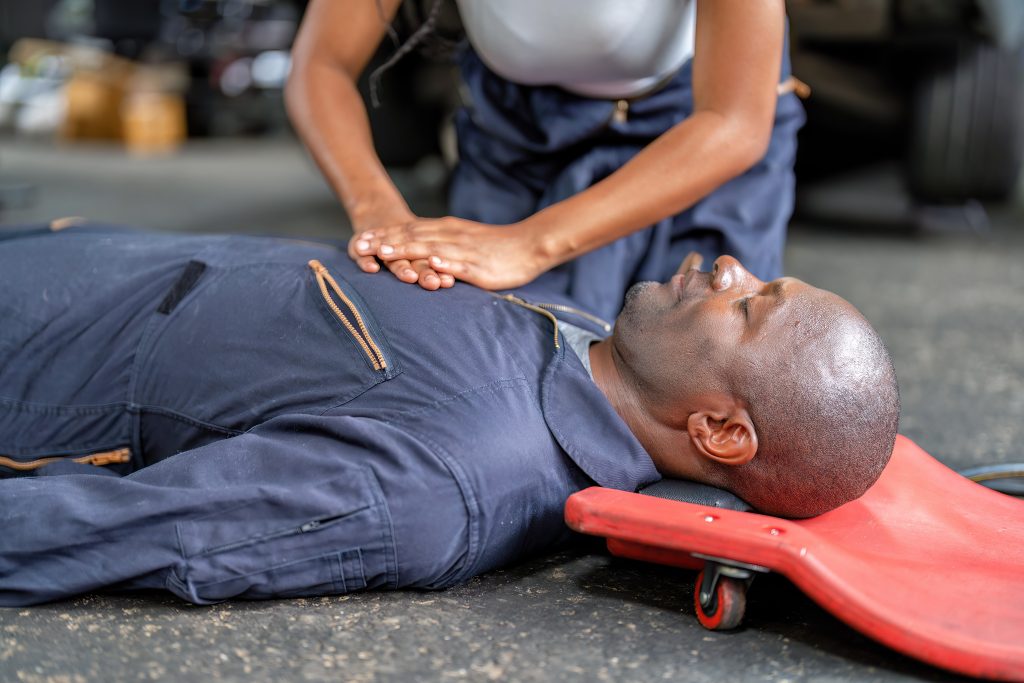
When it comes to keeping your workplace safe, having a solid first aid plan is essential. Emergencies can happen at any time, and being prepared to respond quickly and effectively can make all the difference between a minor injury and a major catastrophe. Whether you run a small office or a large industrial site, creating a comprehensive workplace first aid plan is a smart, responsible step to protect your employees, and your business.
In this blog, we’ll guide you through the key steps to create an effective first aid plan for your workplace. From assessing risks to training your team, you’ll learn exactly what it takes to be ready for any emergency.
Every workplace has its unique hazards, from slip-and-fall risks to chemical exposure or machinery accidents. A first aid plan provides a clear, step-by-step approach to managing these risks. It helps ensure that injured employees receive prompt care and that emergencies are handled smoothly without panic or confusion.
Beyond the immediate safety benefits, having a first aid plan is often required by workplace safety regulations. It also shows your commitment to employee well-being, boosting morale and trust.
The first step in creating a first aid plan is understanding the specific risks your employees face. Walk through your workplace and identify potential hazards. Common risks include:
Once you’ve pinpointed hazards, determine the types of injuries that could occur. This helps tailor your first aid response to likely scenarios.
Decide who will take charge during an emergency. Identify employees who will be trained in first aid and CPR and designate them as your workplace first aid responders.
Make sure everyone knows who these responders are and what their responsibilities include. This might involve:
Having clear roles helps avoid confusion when seconds count.
A fully stocked first aid kit is a cornerstone of any first aid plan. Kits should be easily accessible and maintained regularly. Basic supplies include:
Depending on your workplace risks, you may need specialized items like chemical burn kits or splints.
Your first aid plan should clearly outline what to do in various emergency situations. This includes:
Make these procedures easy to understand and ensure they’re posted in visible locations around your workplace.
Training is critical to the success of your first aid plan. Employees should be trained not only in CPR and basic first aid but also in how to use the first aid kit and follow emergency procedures.
Offering CPR certification courses regularly ensures that your designated responders maintain their skills and confidence. Remember, trained responders save lives.
Workplaces evolve, and so do risks. Review your first aid plan at least once a year or after any workplace changes, incidents, or drills. Update it to reflect new hazards, changes in staff, or new safety equipment.
Regular drills also help employees practice their roles, improving response times and reducing panic during real emergencies.
Creating a workplace first aid plan might sound like a daunting task, but it’s a vital investment in your employees’ safety and your business continuity. By assessing risks, defining clear roles, equipping your workplace, and providing training, you build a culture of safety and preparedness that benefits everyone.
If you’re ready to take the next step in workplace safety, start with CPR certification for your team. Knowing how to perform CPR is a critical skill that could save a life in an emergency.
Ready to make your workplace safer? Contact CPR Classes Near Me today to schedule CPR certification and first aid training sessions tailored to your business needs. Don’t wait for an emergency, be prepared!
Our primary goal is to ensure that you receive a top-quality CPR/First Aid certification. With our in-person training in Austin, you can learn CPR and BLS in just one class. Your presence is all that’s needed to continue with your lesson! During your session, you will complete all the live-training components necessary to ensure you receive your AHA Healthcare Provider certification card.
Our CPR Classes in Austin are discounted to $59.95 (saving you $20), and our CPR + First Aid Class is offered at $79.95 (also saving you $20). When looking for CPR Classes, ensure to check for the American Heart Association seal. Other sites might seem cheaper but frequently lack the official training credentials demanded by employers.
Upon successful completion of the course, you will obtain a CPR certification that is valid for two years. The AHA CPR certification is recognized with the highest acceptance rate among employers nationwide.
Indeed! Enroll in any CPR Certification Austin BLS course to extend your certification for an additional two years. The in-person BLS course and the Renewal Class are identical.
Anyone capable of completing the course independently should consider pursuing CPR training and CPR Certification. There is no minimum age restriction for obtaining a CPR certification in Austin through the American Heart Association (AHA)..
CPR training needs to be carried out in person to guarantee its effectiveness. Our experienced instructors offer an engaging and dynamic learning experience. Typically, employers do not recognize CPR certifications that are obtained solely through online courses.
All authorized American Heart Association training centers are obligated to display the entire video. After a three-hour session with CPR Classes Near Me Austin, your BLS CPR eCard will be promptly issued by the instructor on the same day!